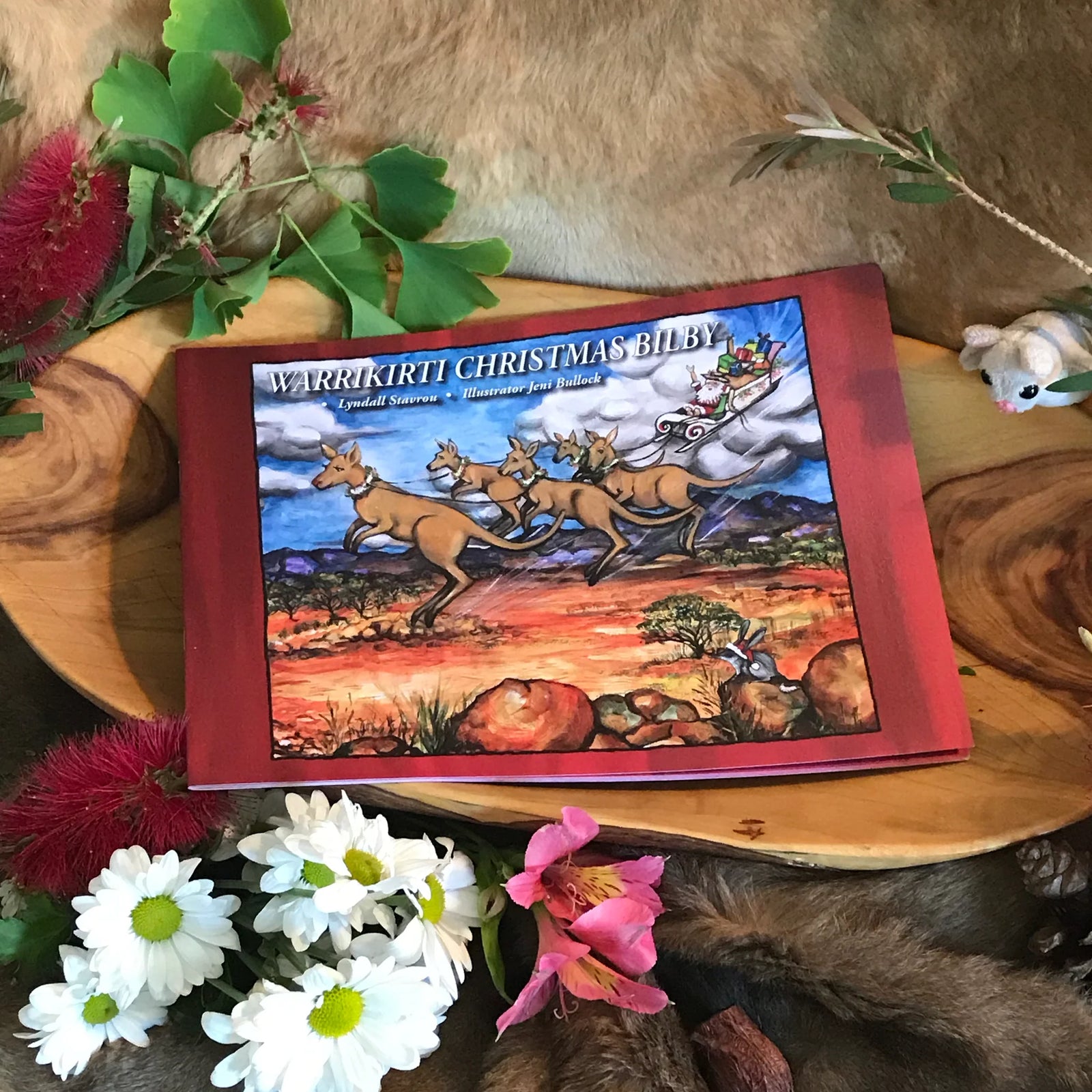
Top 4 Christmas books that include an Aboriginal perspective
Warrikirki Christmas Bilby
Warrikirti the bilby is very surprised when Santa asks for his help.The little bilby acts as Santa's guide and helps deliver Christmas presents to the children who live in a little bush community in the Australian Outback.
While travelling with Santa and his flying kangaroos, Warrikirti meets the people and the dingoes who hunt feral cats. The cats threaten the survival of bilbies in the remote areas of the outback.
Indigenous and Conservation themes.A few words from Warumungu, the local Indigenous language are used in the text.
Tea and Sugar Christmas
The Tea and Sugar train only came once a week on a Thursday. But the special Christmas train only came once a year.
Today was Sunday.
Four more days without sugar.
Four more days until the Christmas train. Please, please be on time. Please don’t be late.
Join Kathleen in the outback as she eagerly awaits the Christmas Tea and Sugar train. Will she meet Father Christmas? Will she receive a Christmas gift from him? A delightful, heart-warming story from the National Library of Australia that will intrigue, captivate and introduce readers to a slice of the past. Wonderful sensitive illustrations, including a beautiful double fold-out image showing the shops inside all the carriages.
For 81 years, from 1915 to 1996, the Tea and Sugar Train travelled from Port Augusta to Kalgoorlie once a week. It serviced the settlements along the Nullarbor Plain, a 1050-long rail link. It was a lifeline. There were no shops or services in these settlements. The train carried everything they needed—household goods, groceries, fruit and vegetables, a butcher’s van, banking facilities and at one time even a theatrette car for showing films. The biggest excitement for the children was the first Thursday of December every year, when Father Christmas travelled the line. He distributed gifts to all the children on the way, including those of railway workers, those in isolated communities, and station kids.
The Old Frangipani Tree at Flying Fish Point
Long ago, when my mother was a child, there was an enormous frangipani tree that grew in the town of Fkhong Fish Point. People came from all around to pick the beautiful frangipani flowers that adorned its twisted old branches.
One year, Mym wanted to enter the Flying Fish Point School fancy dress carnival but she had nothing to wear.
Faith-girl you can go as an island princess. We’ll make a lei from the old Frangipani Tree.
We find this book perfect to use around the Christmas period. Whilst it does not speak specifically about Xmas it does touch on a summer fancy dress celebration. We use this book to discuss the different ways that people celebrate as not everyone does celebrate Christmas and perhaps instead may find having an end of year party more inclusive.
From an anti bias perspective it also discusses that not all families have money to be able to participate in hallmark calendar events which serves as a point of reflection around inclusive practices for early childhood educators.
Ernie Dances to the Didgeridoo
The sixth title in Alison Lester s bestselling Clive Eats Alligators series, featuring Ernie, who goes to Arnhem Land and writes to his friends about his experiences.
When Ernie goes to live in an Aboriginal community in northern Australia, the people, climate, plants and animals are all new to him. Here are his letters to Clive, Nicky, Rosie, Frank, Tessa and Celeste, describing the life he discovers with his new friends in their wild and beautiful land.
Alison Lester visited Arnhem Land in 1996 and 1997 as a guest of the Gunbalanya Community School with her friend and fellow author Liz Honey. Together they worked with staff and students of the school to produce poems, plays, puppets and paintings. This book is based on a story the upper Primary students made about their lives, called We Love Gunbalanya . Arnhem Land is owned by the Aboriginal people who have lived there for more than 50,000 years. There are many different tribes and language groups throughout Arnhem Land, but at Gunbalanya, where this book is set, the main language spoken is Kunwinjku.







